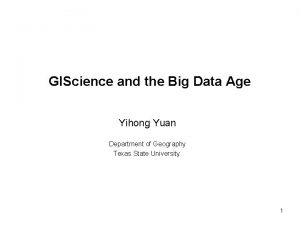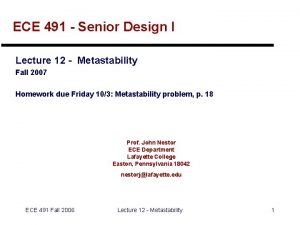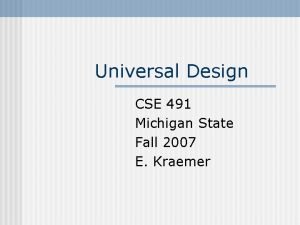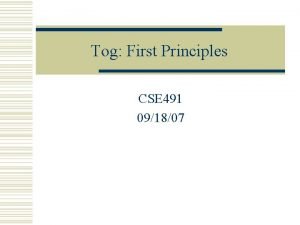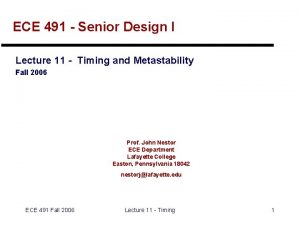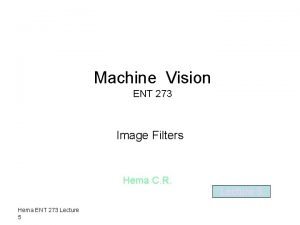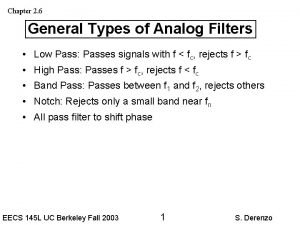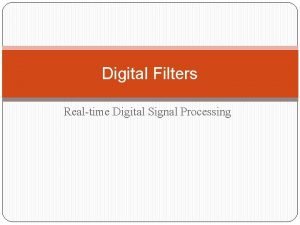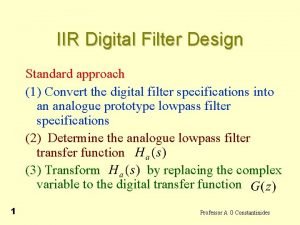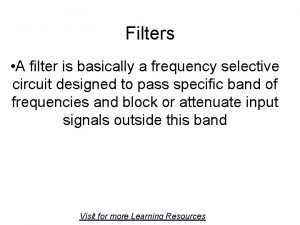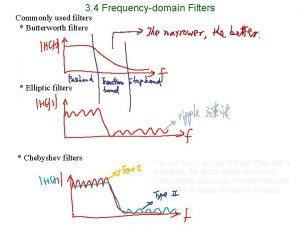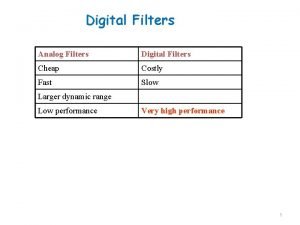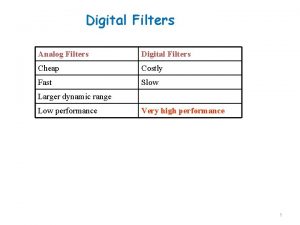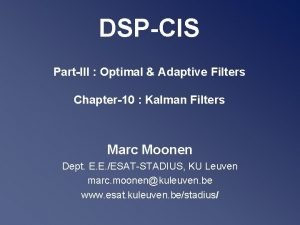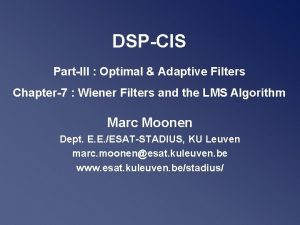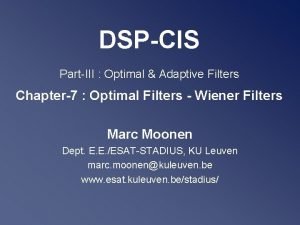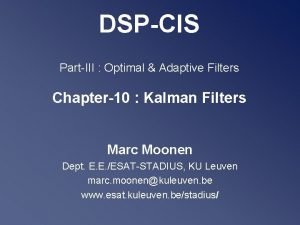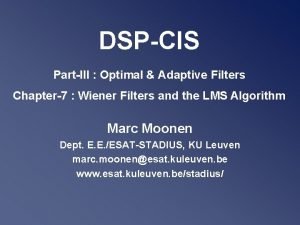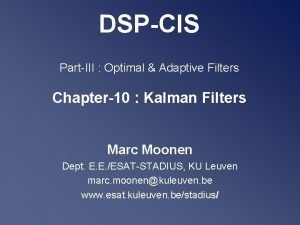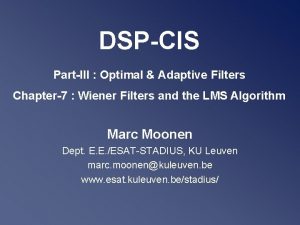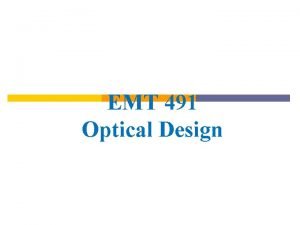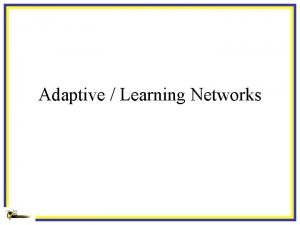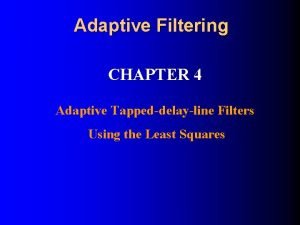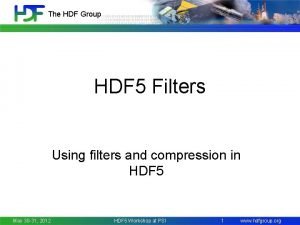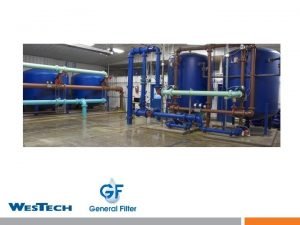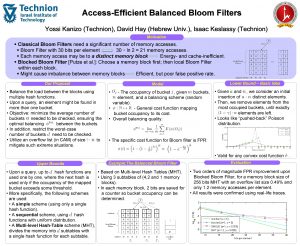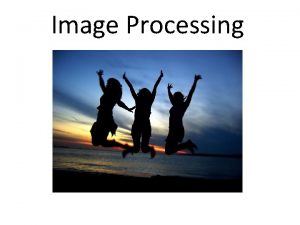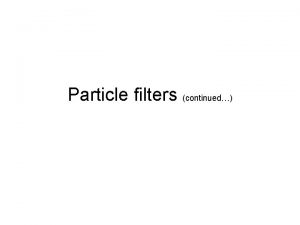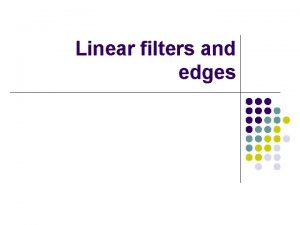FrequencyDomain Adaptive Filters Wu Yihong EE 491 D











![Overlap-Save Sectioning § Linear convolution between a finite-length sequence [w(n)]and an infinite-length sequence [x(n)]. Overlap-Save Sectioning § Linear convolution between a finite-length sequence [w(n)]and an infinite-length sequence [x(n)].](https://slidetodoc.com/presentation_image_h2/beefc80f1f044ff5c5cece32ff311109/image-12.jpg)













- Slides: 25

Frequency-Domain Adaptive Filters Wu, Yihong EE 491 D 5 -12 -2005

Overview n n n Advantages of FDAF Block-Adaptive Filters (BAF) Convergence Properties Choice of Block Size Methods Computational Complexity

Advantages of FDAF n n Providing a possible solution to the computational complexity problem Attaining a more uniform convergence rate by exploiting the orthogonality properties of DFT

Block-Adaptive Filters (BAF) n BAF Diagram n BLMS Equations n Convergence behavior

BAF Diagram Figure 1: Block-adaptive filter

BLMS Equations § From the conventional LMS, we could get the following equations for BLMS

BLMS Equations(cont. ) Tap-weight updated once after collection of every block of data samples n L is the block length n is the effective step-size parameter n Error is the difference between the output and the desired signal n

BLMS Equations(cont. ) n If written in matrices format:

Convergence Properties n n Average time constant equation: If is the same for both conventional LMS and BLMS, they would have the same average time constant. For zero-order formula, the to 1/. will be small while comparing For fast adaptation, is small and L is large, so will be so large that the higher order effects would cause instability problems. BLMS could overcome the problem.

Choice of Block Size n n L = M: optimal choice for computational complexity L < M: offers the advantage of reduced processing delay L > M: gives rise to redundant operations in the adaptive process Overall, L = M is the best choice

Methods n Overlap-Save Sectioning n Overlap-Add Sectioning n Circular Convolution
![OverlapSave Sectioning Linear convolution between a finitelength sequence wnand an infinitelength sequence xn Overlap-Save Sectioning § Linear convolution between a finite-length sequence [w(n)]and an infinite-length sequence [x(n)].](https://slidetodoc.com/presentation_image_h2/beefc80f1f044ff5c5cece32ff311109/image-12.jpg)
Overlap-Save Sectioning § Linear convolution between a finite-length sequence [w(n)]and an infinite-length sequence [x(n)]. § Zero-padding w(n) from N-point to 2 N-point § FFT both x(n) and w(n) to get Y(k) § First N point data would be ignored § Only looking for the last N point data

Overlap-Save Sectioning Figure 2: Overlap-Save Sectioning.

Overlap-Save Sectioning Figure 3: Overlap-Save FDAF

Overlap-Save Sectioning n FDAF Algorithm Based on Overlap-Save Sectioning

Overlap-Add Sectioning n Input signal is different Output y(k) n. Error E(k) n

Overlap-Add Sectioning Figure 4: Overlap-Add FDAF.

Overlap-Add Sectioning n FDAF Algorithm Based on Overlap-Add Sectioning

Circular Convolution n n Reducing complexity Causing additional degradation Constraint matrices have been eliminated Rank of F is M = N Data is not overlapping any more u Error is always linear between Y(K) and D(K) u

Circular Convolution Figure 5: Circular-Convolution FDAF.

Circular Convolution n FDAF Algorithm Based on Circular Convolution

Computational Complexity n Equation Depending on the filter size n. Greatest: Linear convolution n. Smallest: Circular convulution n

Computational Complexity Table 1: FDAF computational complexity ratios

Conclusion n n Advantages of FDAF Computational Complexity Some methods Potential to be developed in the future

Thank you very much! Have a nice Summer!
 Yihong yuan
Yihong yuan Ece 491
Ece 491 Ba491
Ba491 Ee 491
Ee 491 Ceng 491
Ceng 491 Cse 491
Cse 491 Ba 491
Ba 491 Ee 491
Ee 491 Colour 091807
Colour 091807 Ece 491
Ece 491 Pd 491
Pd 491 Ece 491
Ece 491 Ece 491
Ece 491 Cs 491 bilkent
Cs 491 bilkent Bacterial filters ppt
Bacterial filters ppt Our personal filters assumptions
Our personal filters assumptions Machine vision
Machine vision Types of analog filters
Types of analog filters Weka hadoop
Weka hadoop Event list filters packet tracer
Event list filters packet tracer Digital image processing
Digital image processing Spectral transformation of iir filters
Spectral transformation of iir filters Hailstop hail guard
Hailstop hail guard Ironport outbreak filters
Ironport outbreak filters Perceptual filters
Perceptual filters Frequency selective circuit
Frequency selective circuit
